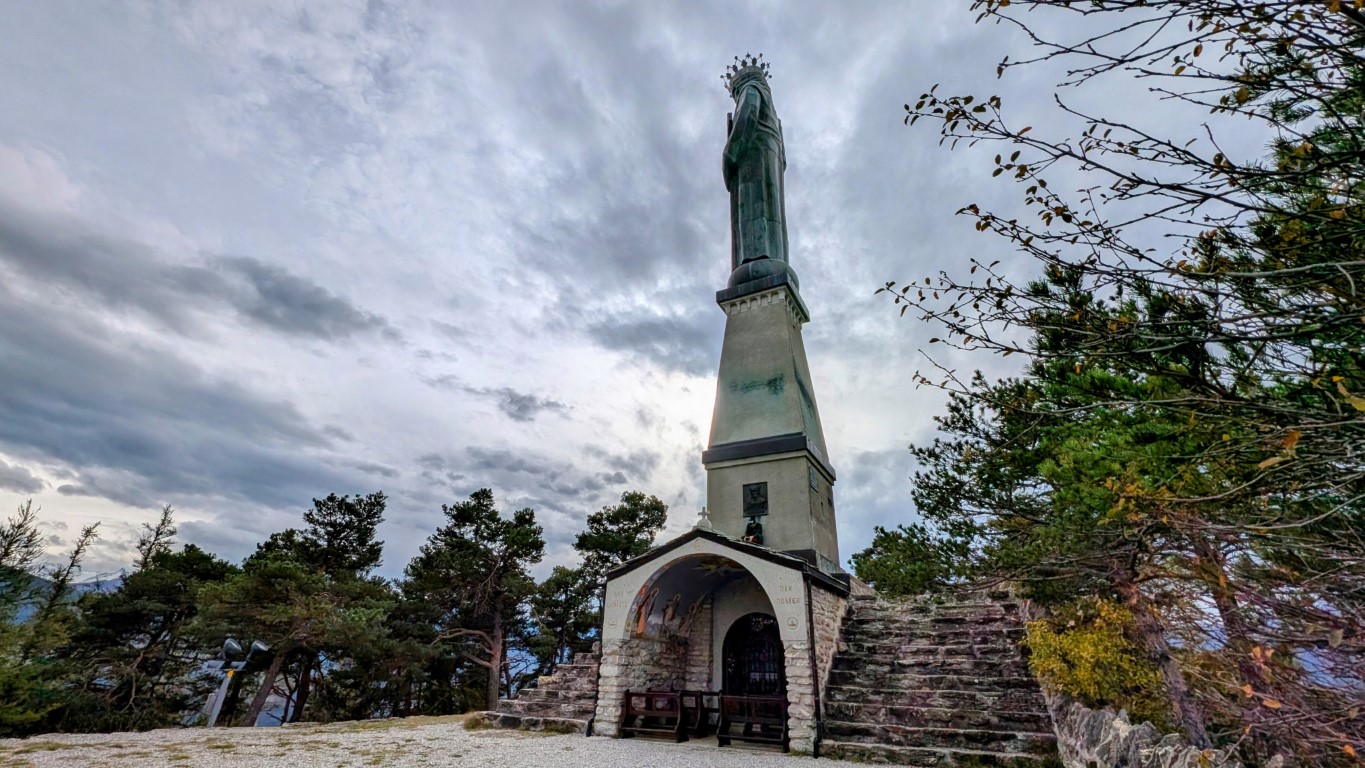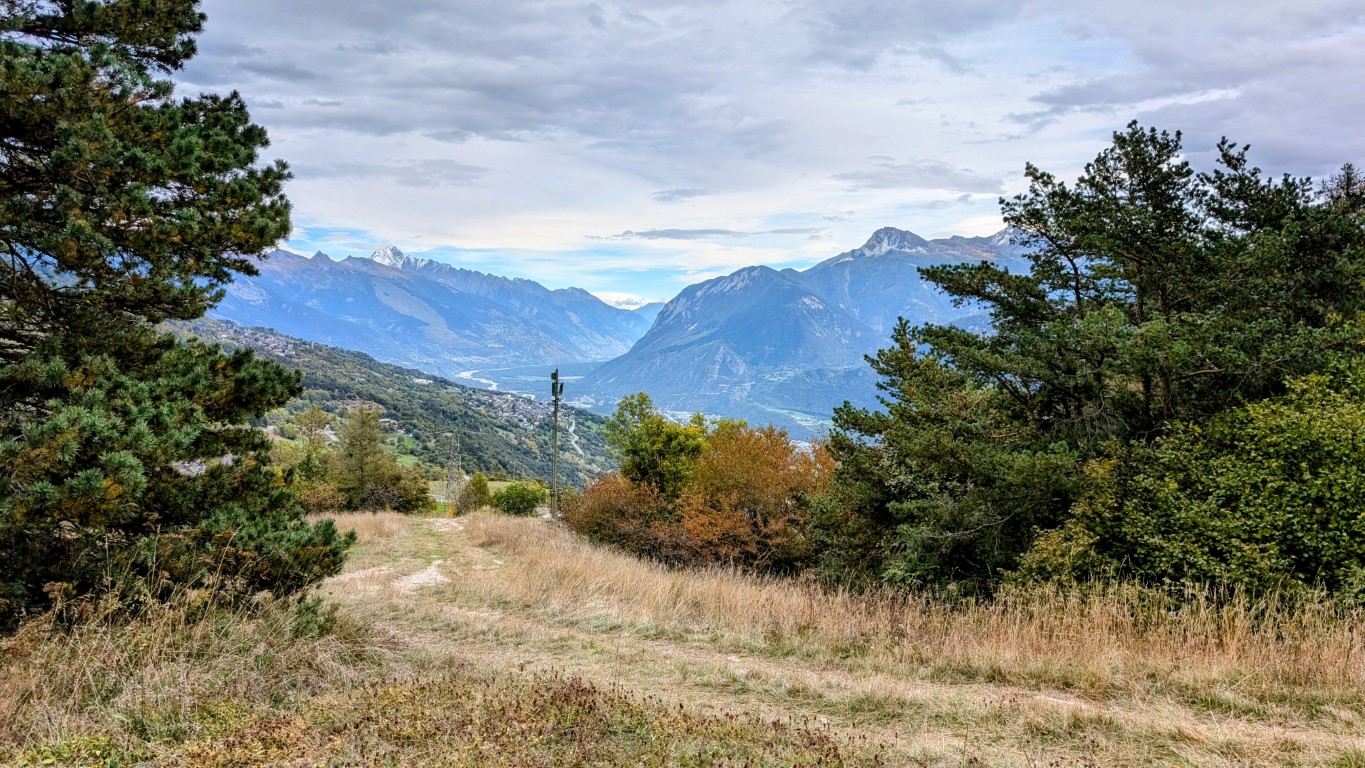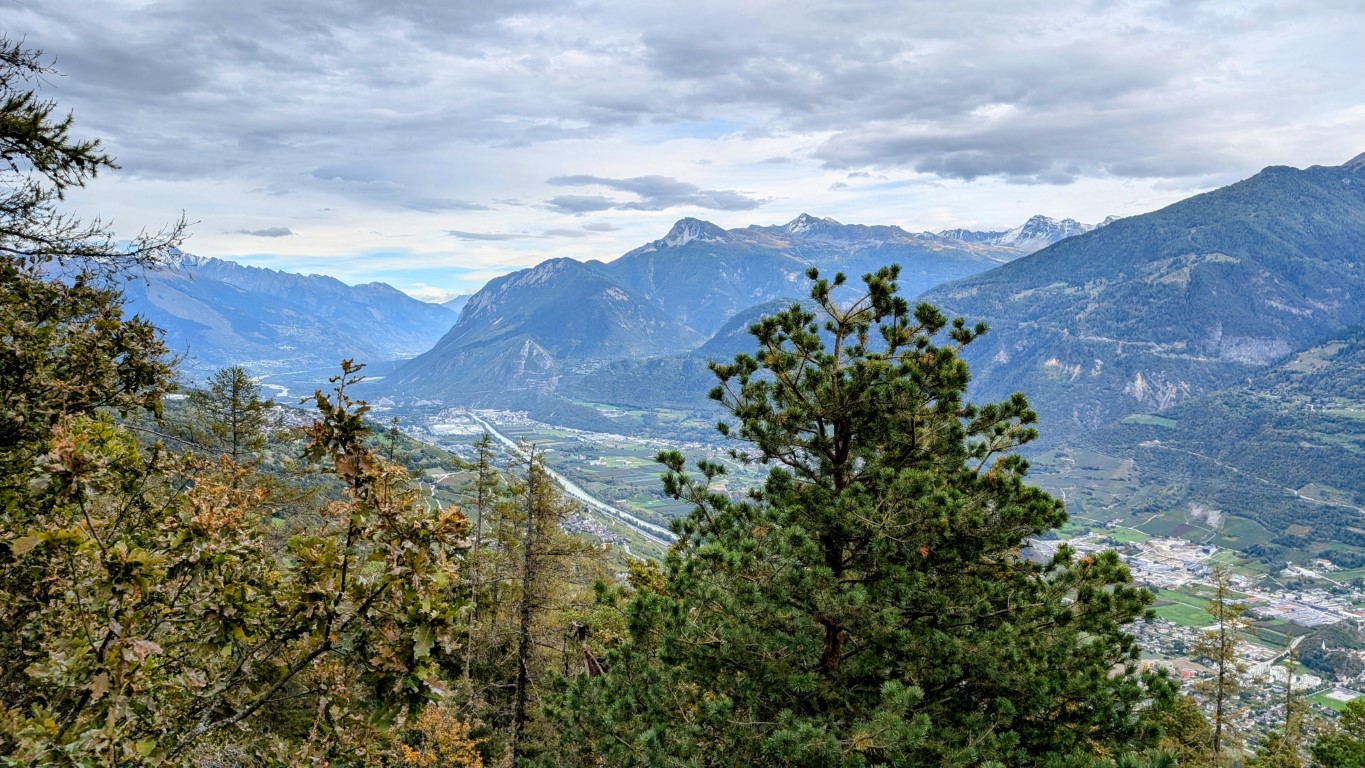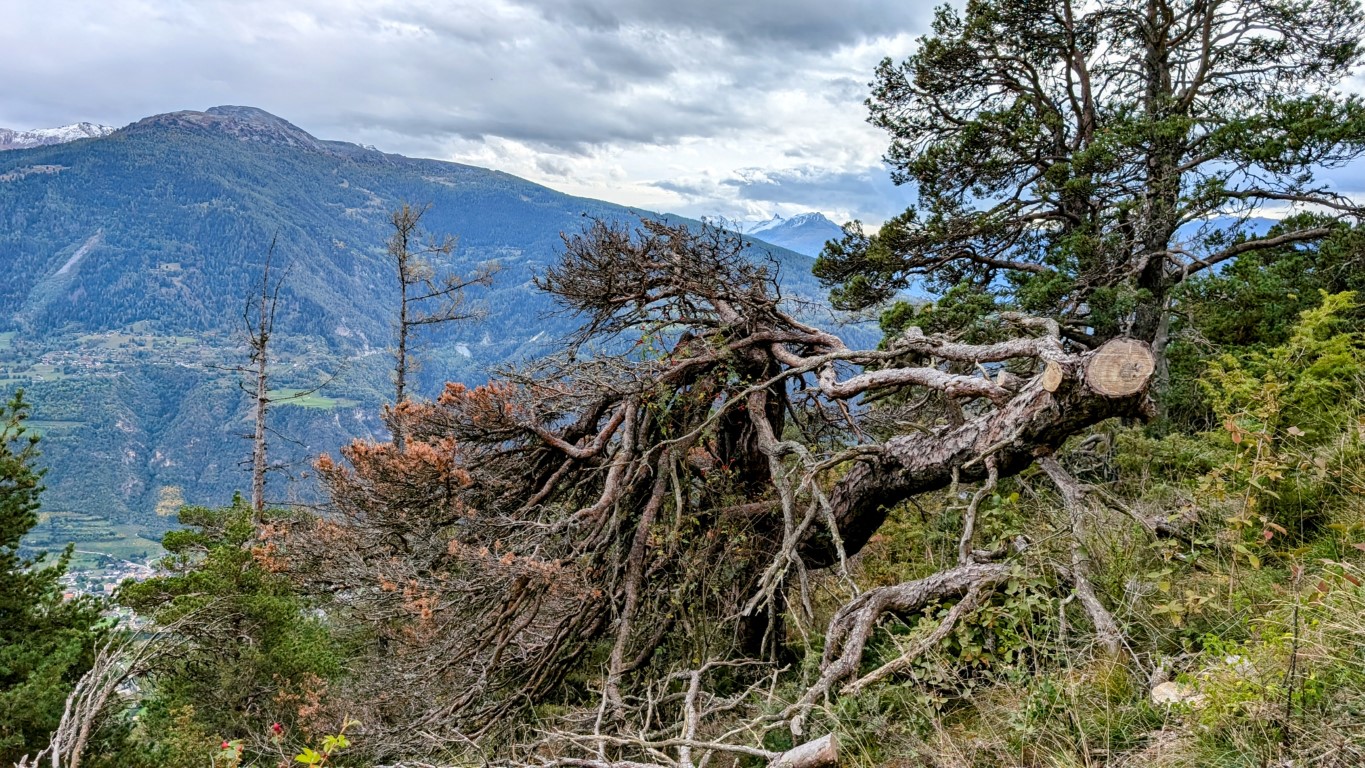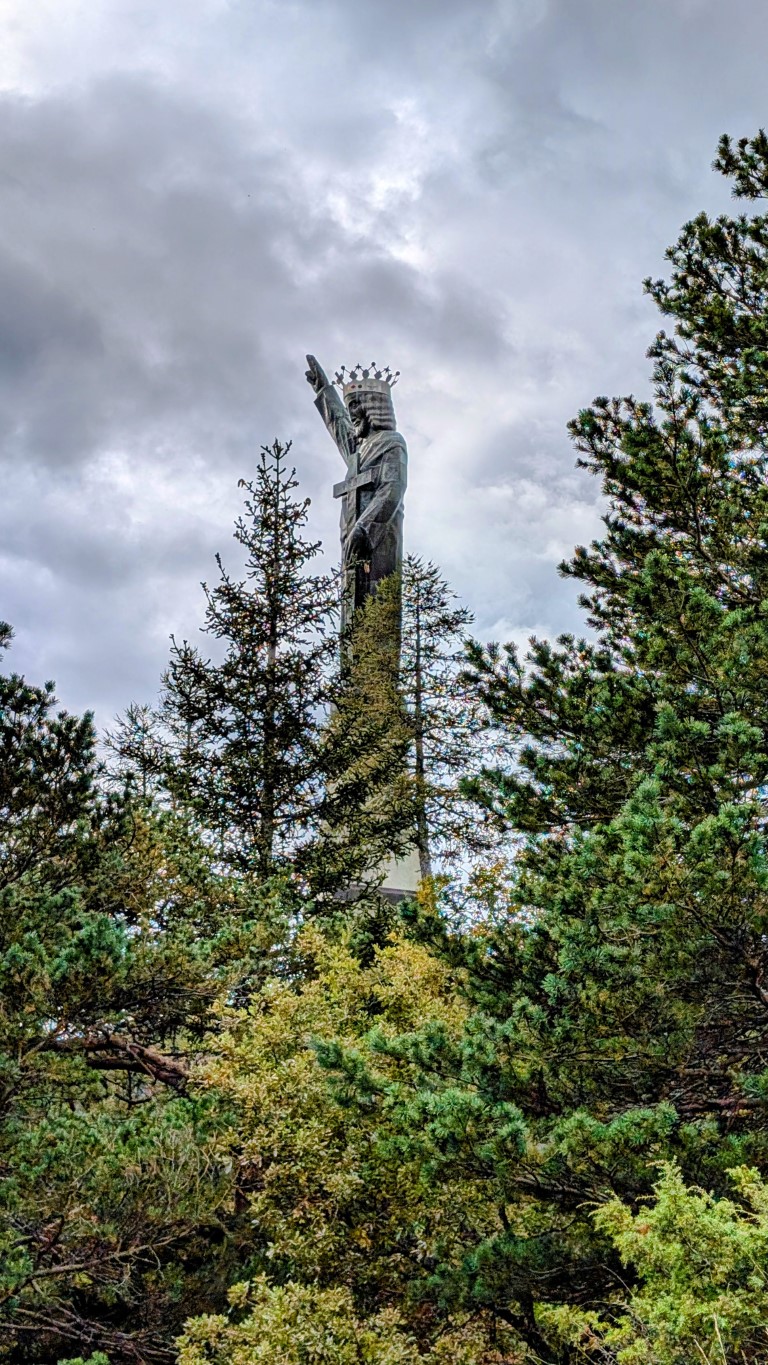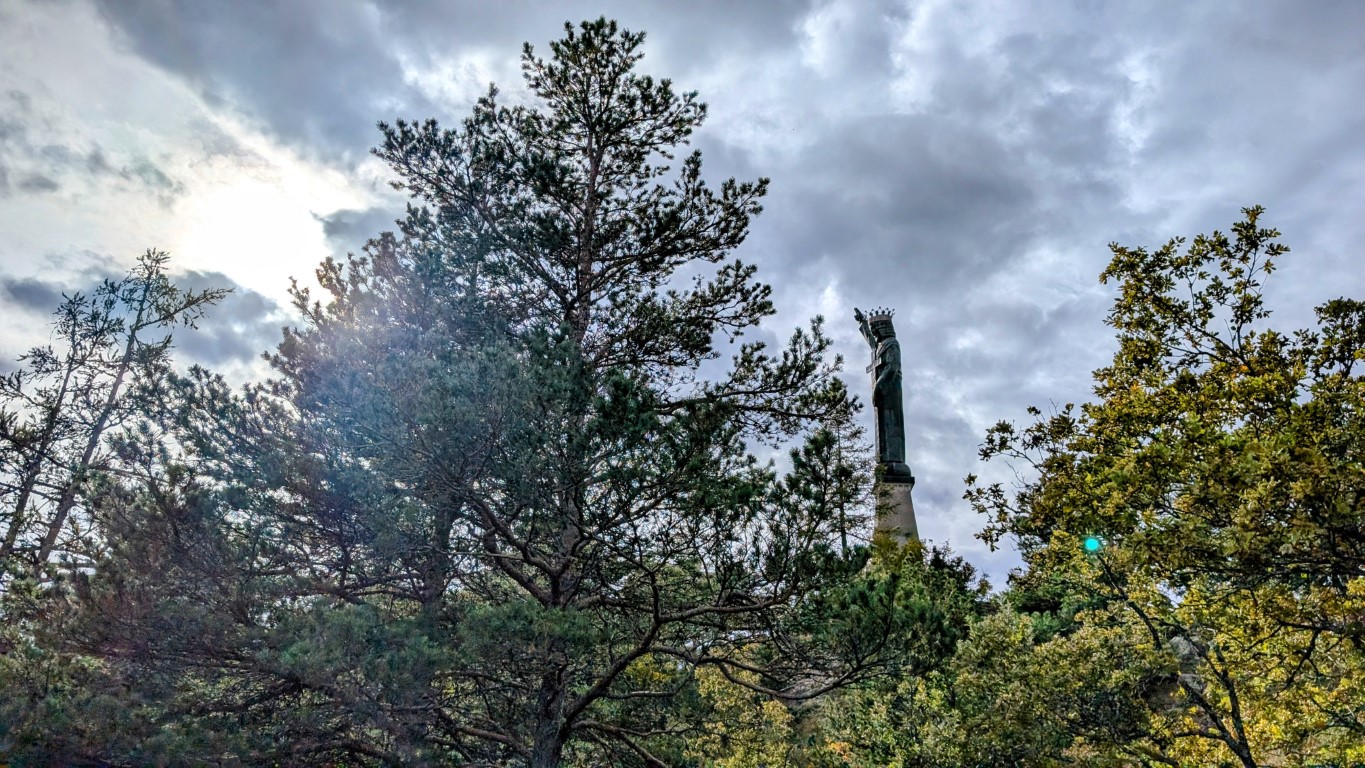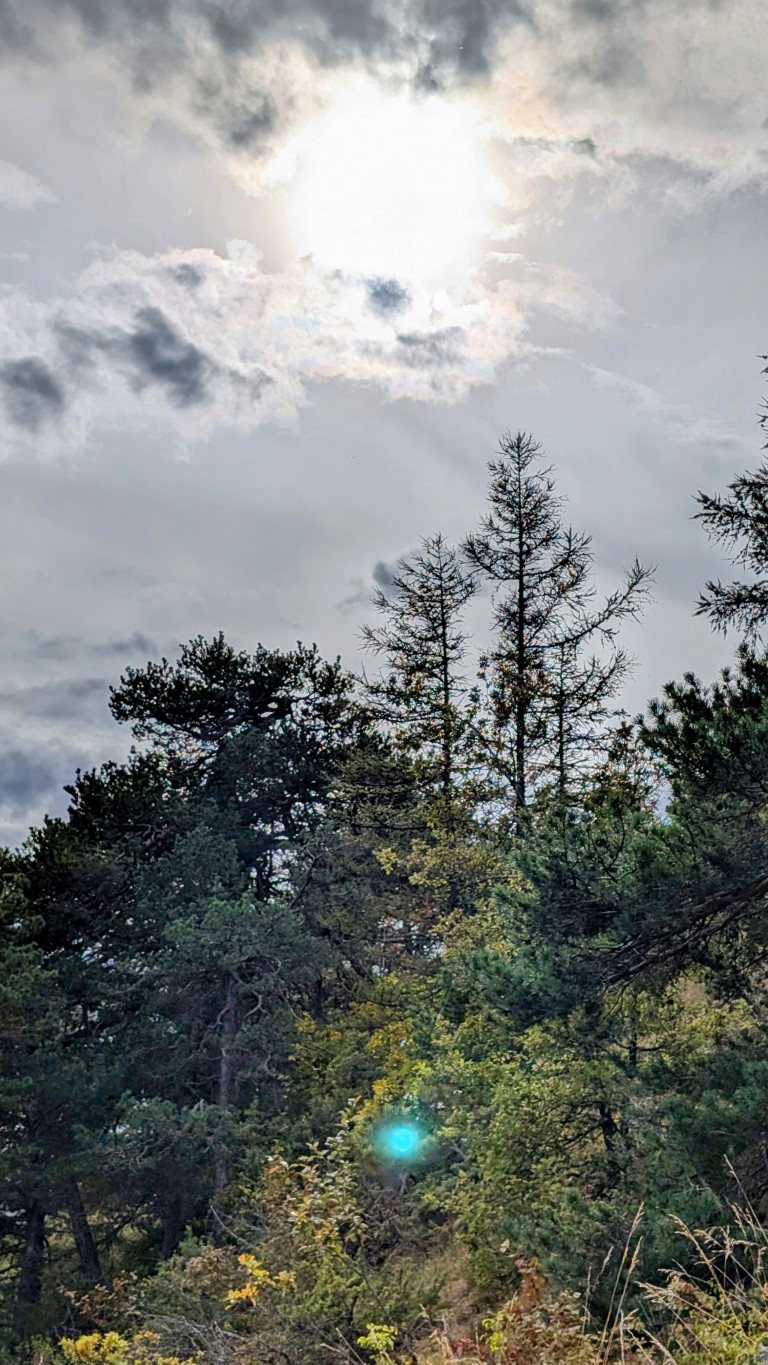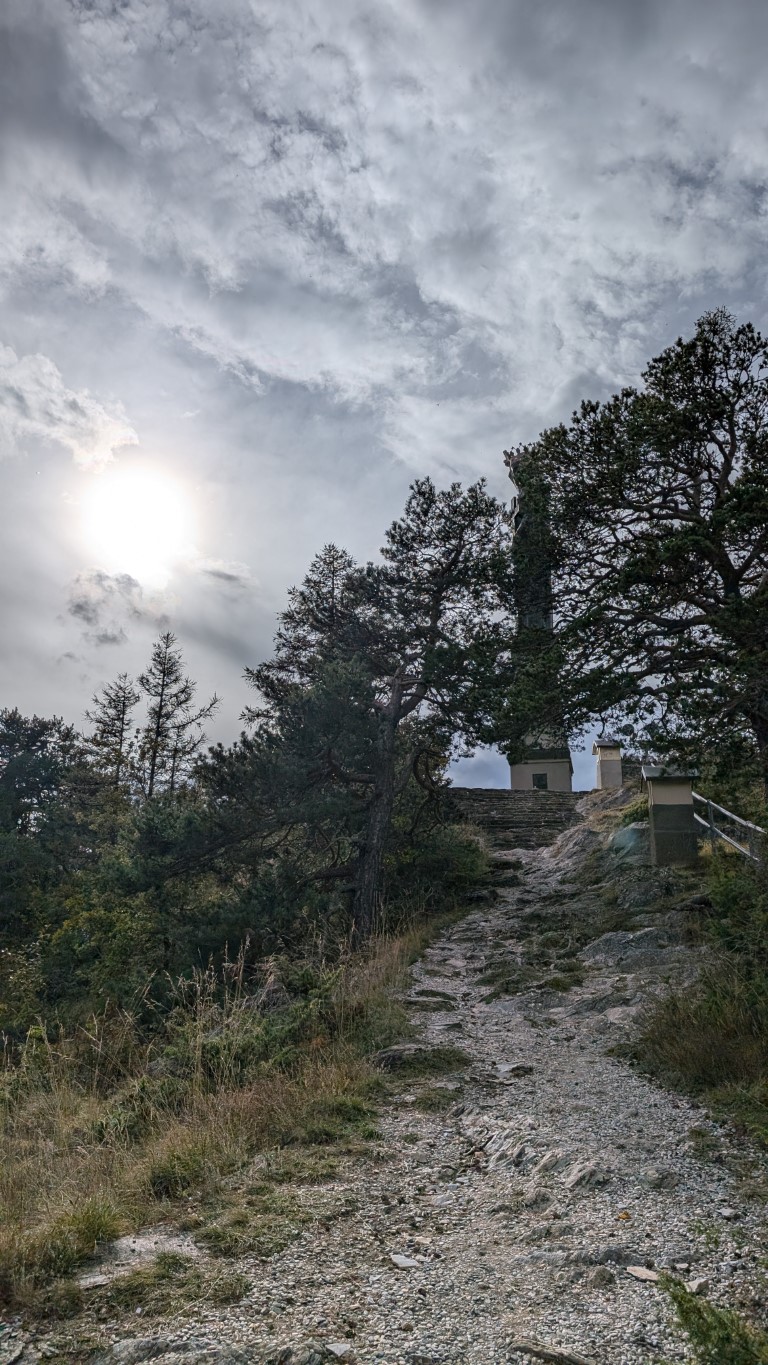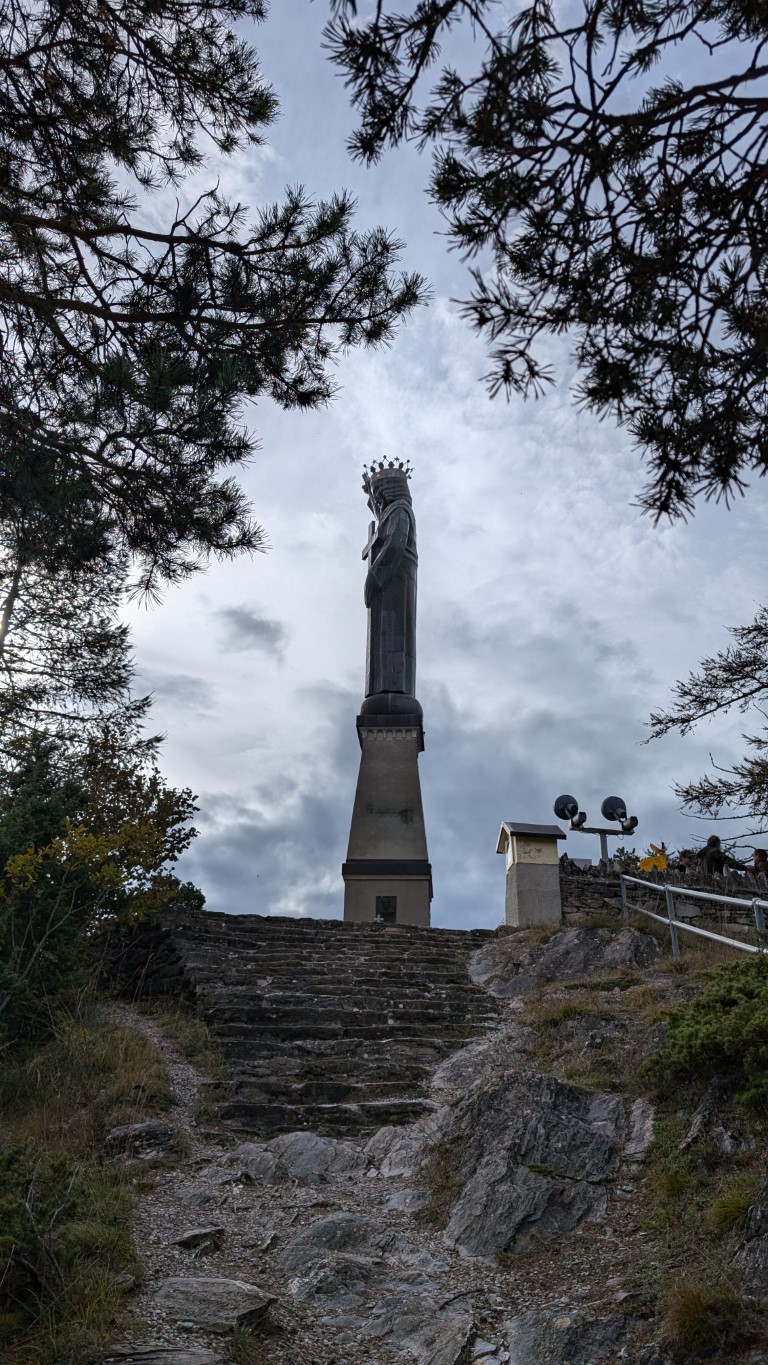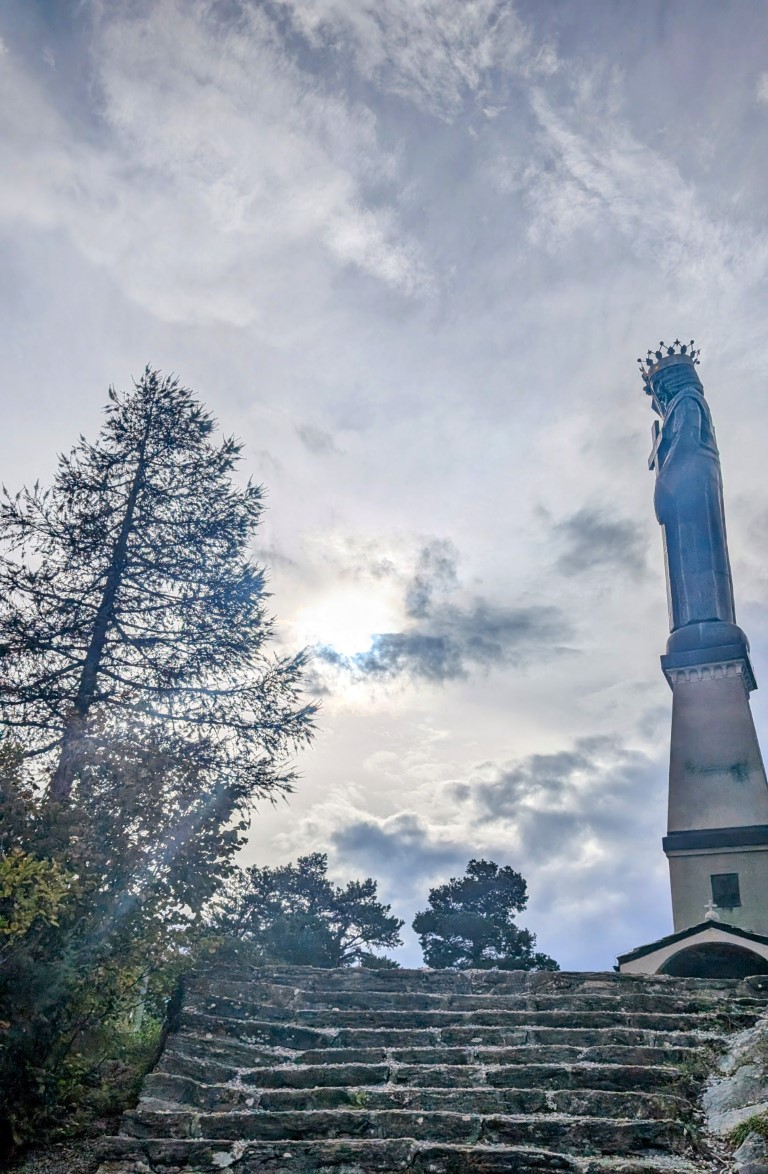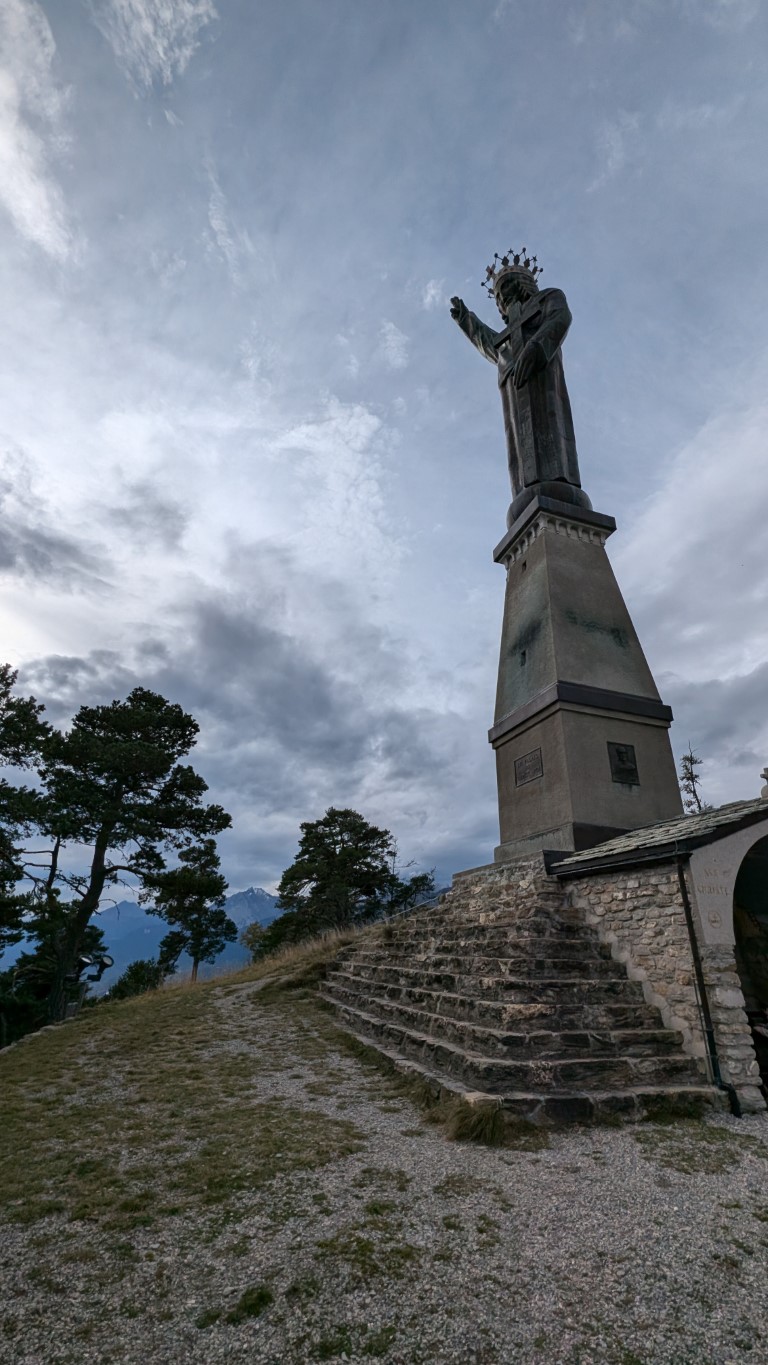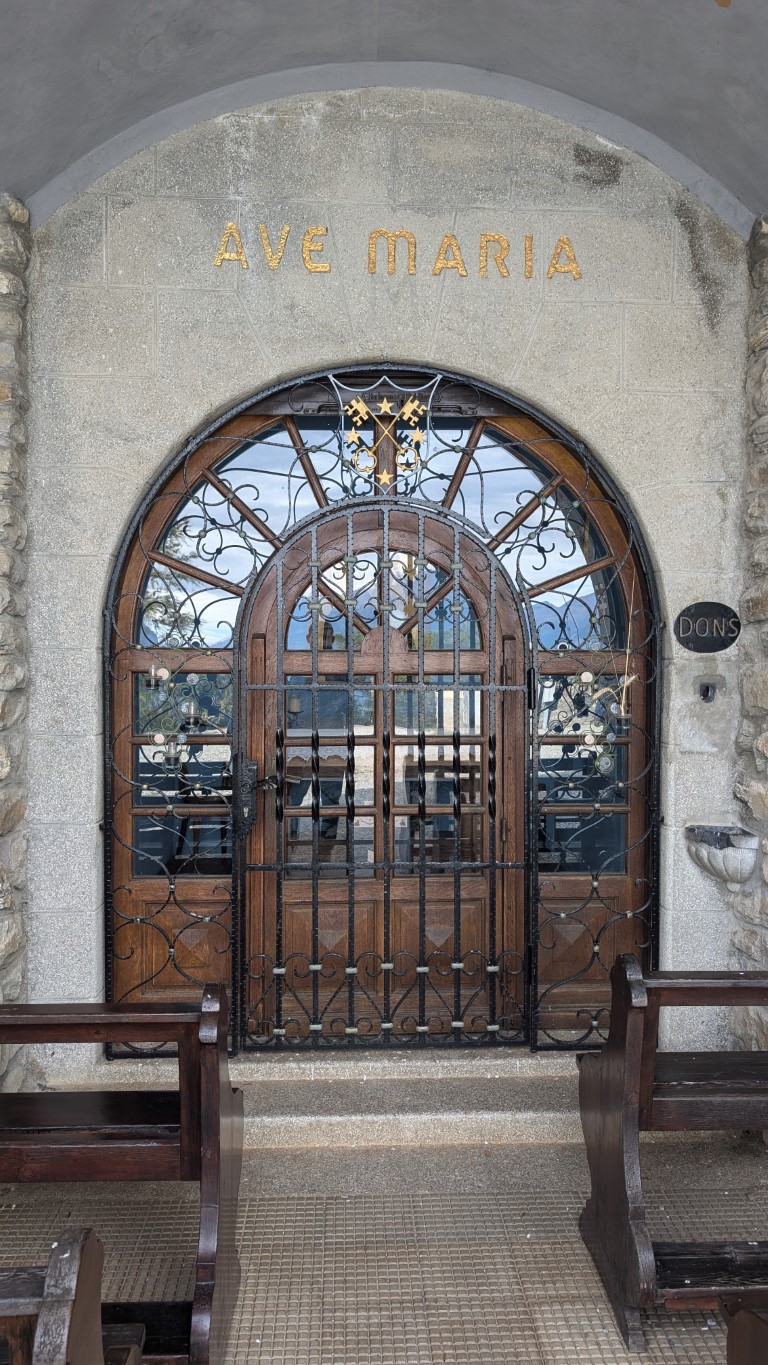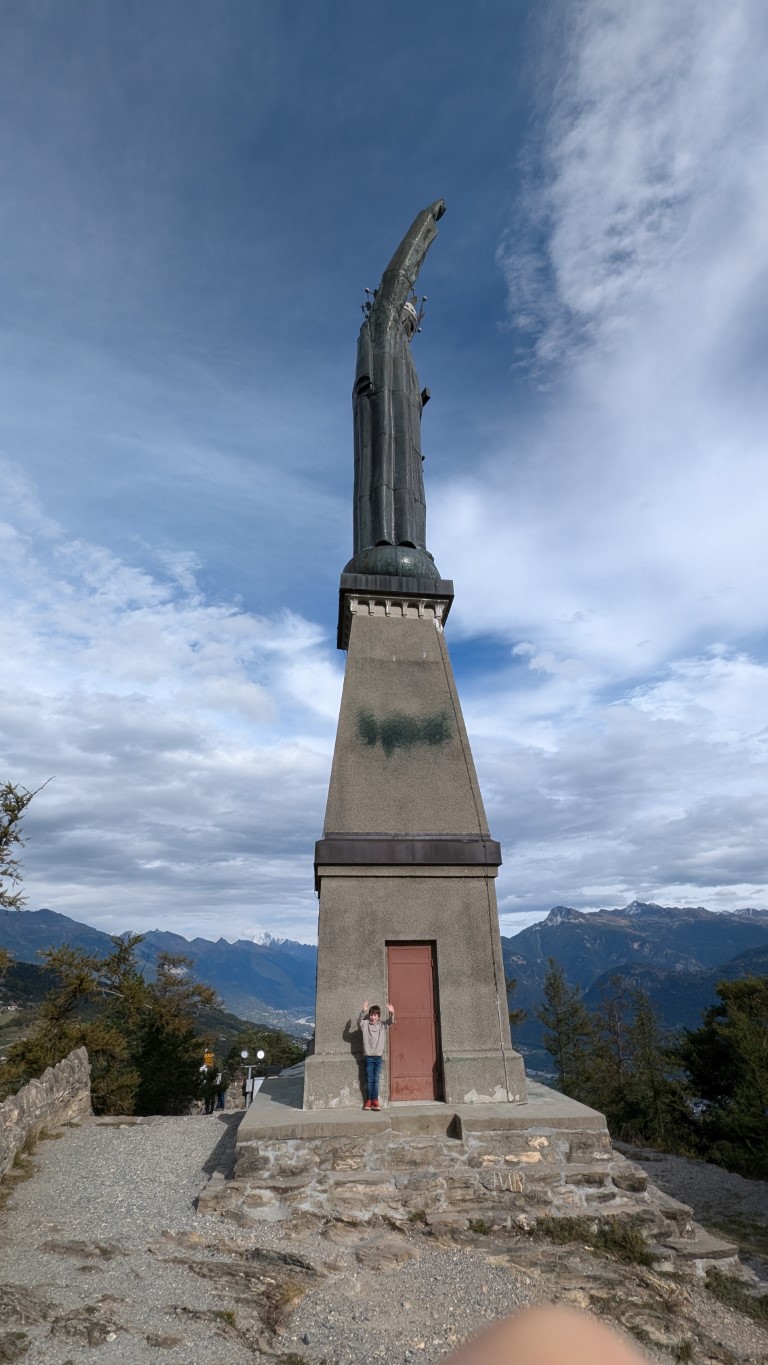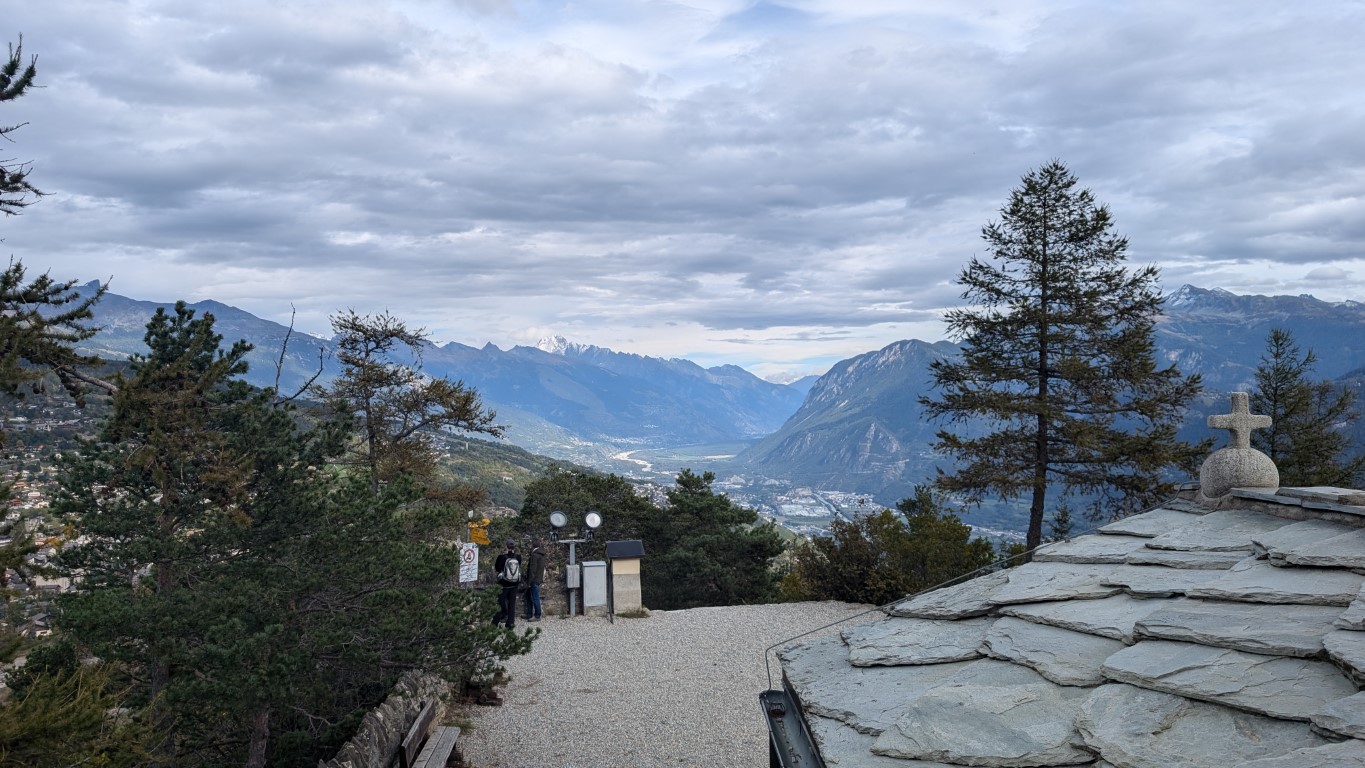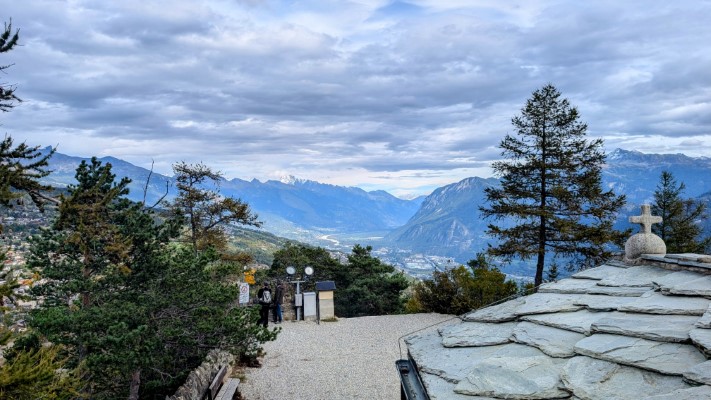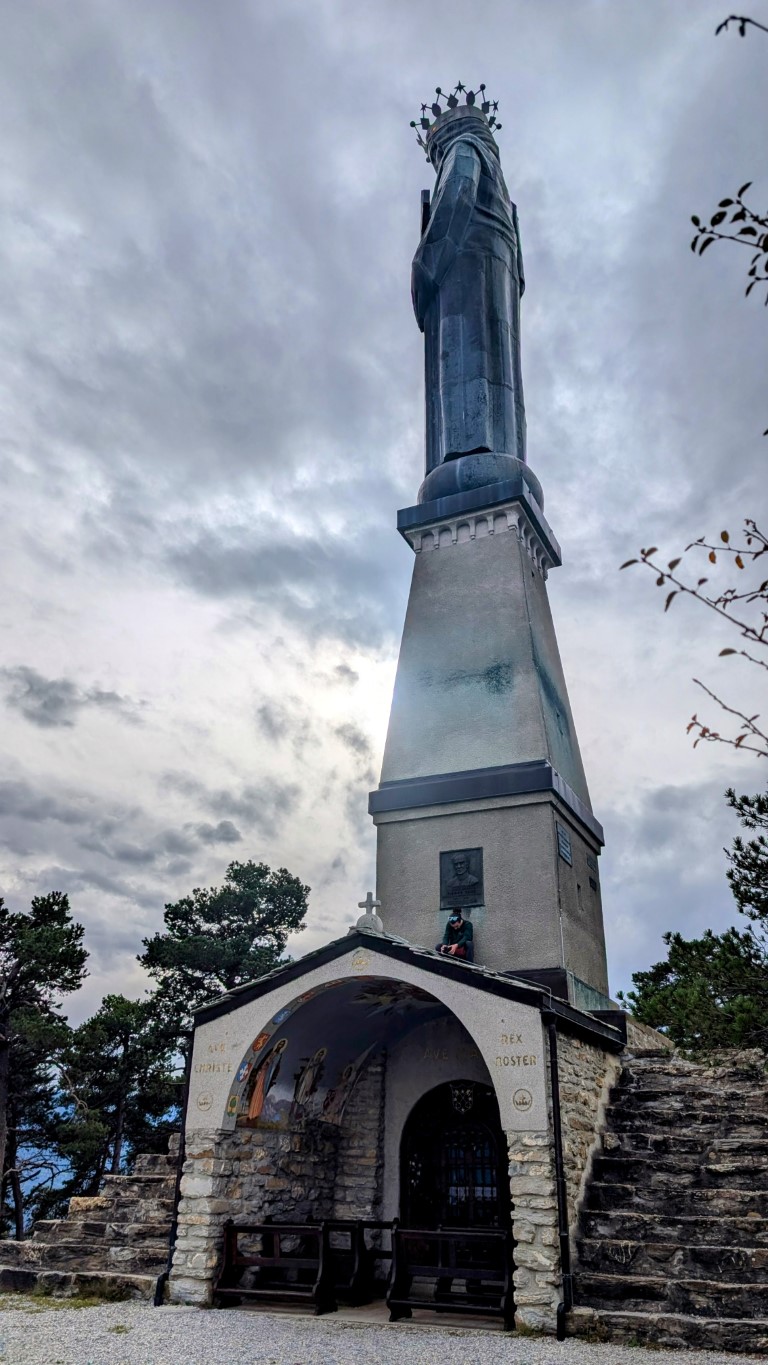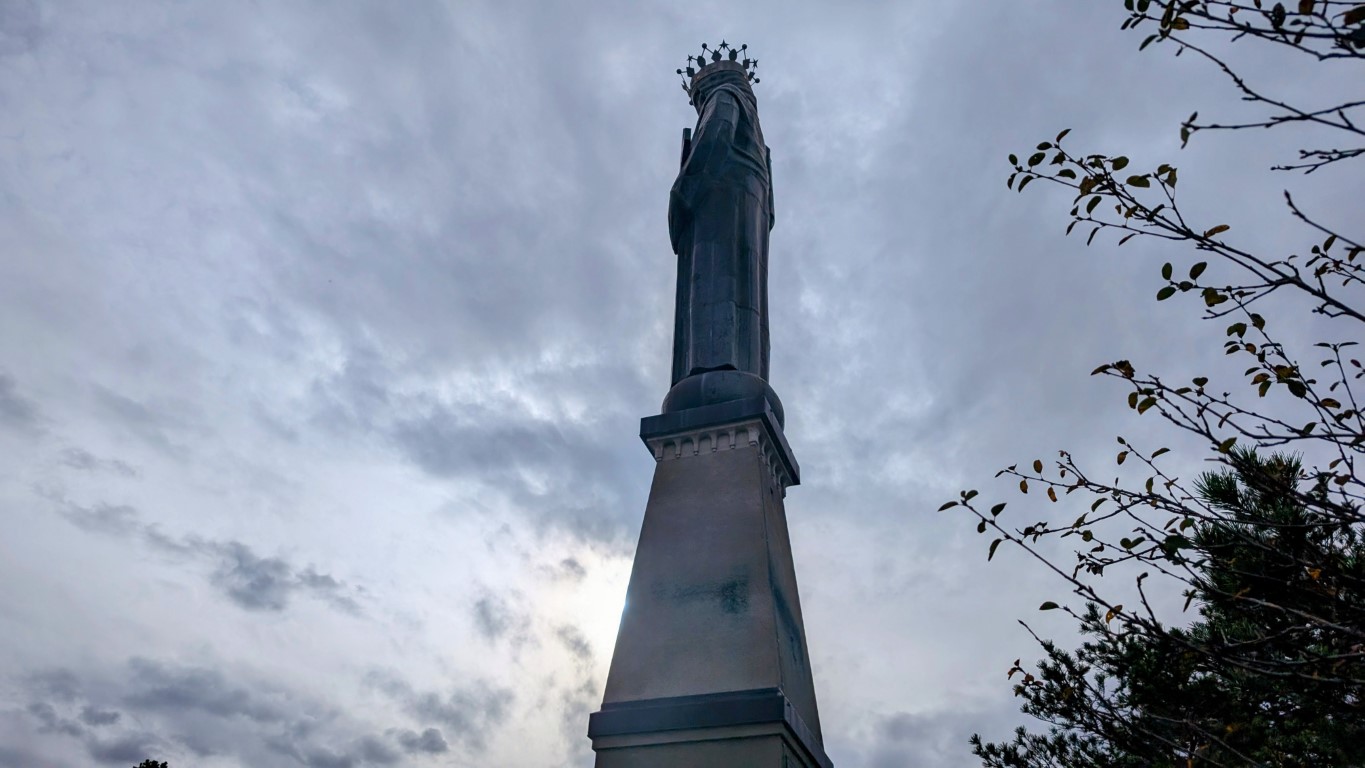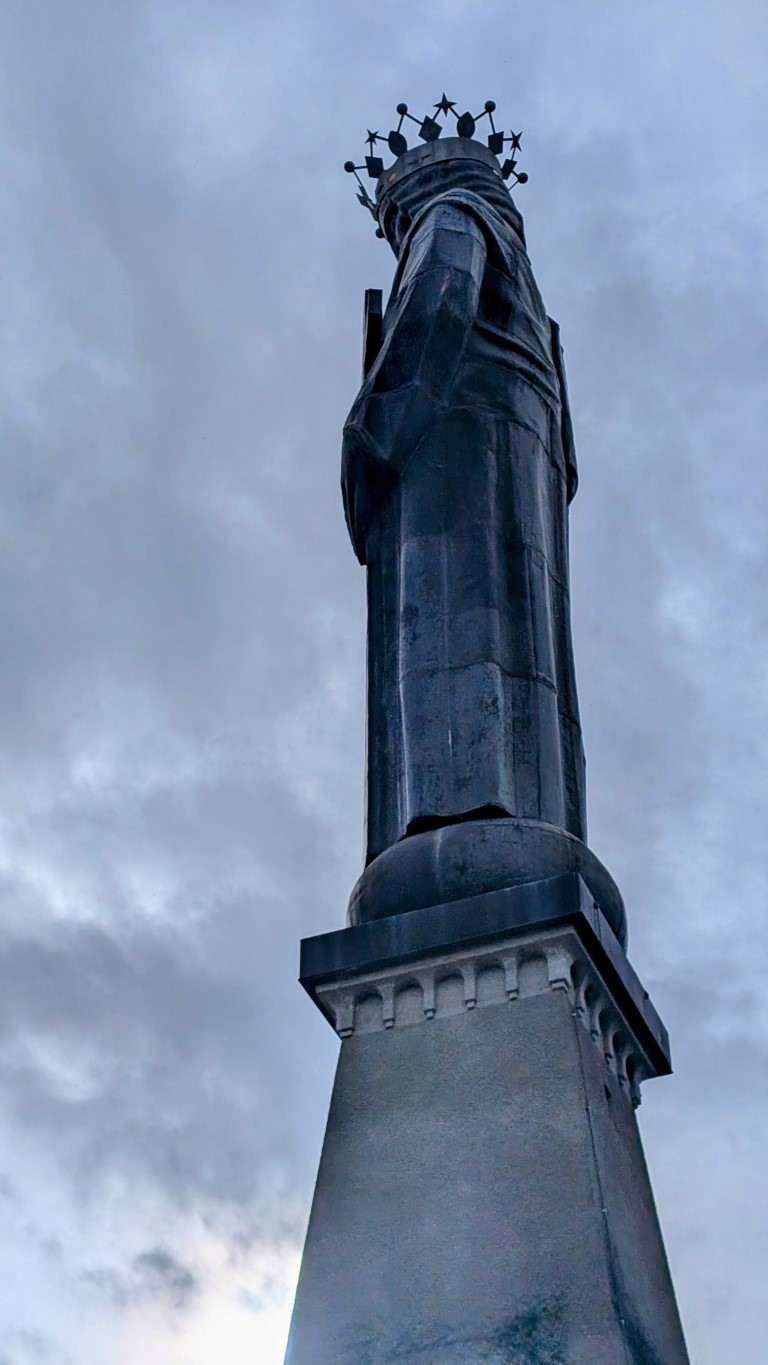The Statue of Christ the King in Lens, also known as the Statue du Christ-Roi à Lens, is an impressive monument that stands 15 metres high above the Rhone Valley. It is located in the municipality of Lens in the Valais region of Switzerland and was erected to commemorate the 1900th anniversary of the death of Jesus Christ. The statue was solemnly inaugurated on September 22, 1935.
The statue stands on the summit of the Colline du Châtelard at 1272 metres above sea level. Its location is symbolic: it overlooks the cantonal capital of Sion and offers a breathtaking view of the surrounding landscape, including the underground lake of St. Leonard. This elevated position underlines the statue's importance as a spiritual landmark.
background
The statue of Christ the King was initiated by Canon Pierre Gard and is the crowning work of his efforts. It stands on a 15-meter-high base, which also houses a chapel. In this chapel you can see the 13 coats of arms of the canton of Valais as well as several images of saints, including Saint Peter in Chains, Saint Bernard of Mont-Joux, Saint Maurice and Saint Theodule.
On the base of the statue is a metal plaque with the inscription: "Le Valais au Christ-Roi" ("The Valais is dedicated to Christ the King"). These words highlight the religious and cultural significance that the statue has for the local community.
The cost of erecting the statue was 42,000 francs, a considerable sum at the time. It was financed through donations from the population and regional churches.
The Three-Legged Horse in Sitten
Many, many years ago, so the old legend goes, in the quiet town of Sion, the peace of the inhabitants was often disturbed at midnight by a strange creature. A three-legged horse with a single, large eye in the middle of its forehead galloped through the alleys and streets with a deafening roar and clattering hooves. It was particularly impetuous in its mischief on the large bridge, which was built in a magnificent manner near the town hall to unite the two banks of the Sion. While the other, narrow wooden bridges connected the town across the river, this bridge, which was located near the town hall, was called "the big one". At that time, people did not ask where the large bridge in Sion was while standing in the middle of it.
One evening, however, when the three-legged horse was roaming around particularly wildly, a brave man, fed up with the spooky noise, decided to approach the sinister horse and see if it was suitable for a ride. Despite the warning voices around him, he dared to go forward and as soon as he approached it, he was willingly taken on the monster's back. How exhilarating the ride was! But the sinister horse grew with each beat of its hoof and rose in height. When it was finally big enough, it suddenly turned into Kirchgasse and with a mighty swing pushed the rider against the upper arch, so that in the morning he was found crushed and laid out on the ground like a blanket. From that day on, the three-legged horses no longer disturbed the nightly peace of the city of Sion.
Another anecdote tells of the strange creatures that haunted the city: the three-legged horse, the green-eyed town hall sow and the red bull.
The town hall sow was always where its name suggested, and its nightly grunting echoed through one of the two alleys that led steeply to the lower part of the city. In the other alley lay the dreaded red bull.
The three-legged horse with its glowing eye had its headquarters in the Mala Curia district and often romped around in an overgrown garden behind the Savièse lane. Where it lay down, no grass grew. With its eerie three legs, it trotted strangely down the riverbed of the Sitte and turned into the Schlossgasse through a small culvert near the town hall. Woe betide anyone who dared to go to the window out of curiosity! The ghostly horse grew to such a size that it could even stare at those lurking on the upper floors, causing the curious to panic and develop painful rashes on their faces. A farmer had a particularly bad time after drinking too much on market day. Thinking the horse was his mule, he carelessly climbed onto its back and let himself be carried away. However, under an arch, the swelling horse compressed him so that he was as thick as a lump of stone. In this way, the ghostly horse had tormented many in its sinister way. Only one was able to save himself by making the sign of the Holy Cross.
After the devastating fire of 1788, when the city was being rebuilt, a mysterious tomb was discovered under a building in the Savièse alley, in which three knights were sitting playing cards. But as soon as they were touched, they crumbled into dust and ashes. The three-legged horse has not been seen since.
Access
The statue is easily accessible on foot from Lens.


